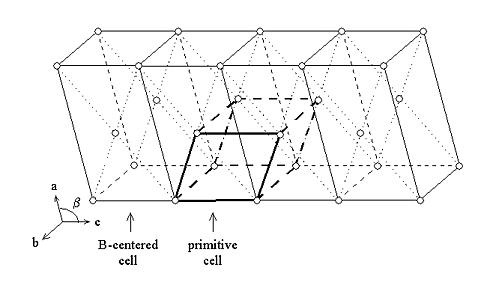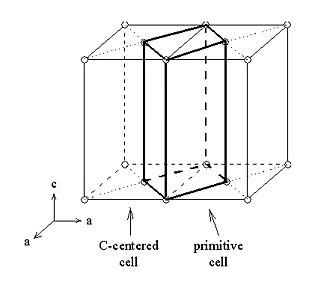Certain Types of Non-Primitive Lattices Aren't Considered
If you can have A-, B-, C-, I-, and F-centered cells, and there are 7 primitive Bravais lattices, why aren't there 5x7=35 non-primitive lattices? This is one of those neat things. There are lots of reasons why certain non-primitive lattices aren't tabulated. We'll now cover a few of them.
Some of them are relatively easy to deal with. For instance, since there are no special symmetry operators or directions in triclinic cells, a smaller primitive cell can be defined instead of using a centered triclinic cell. (I think I've seen only one case where someone presented a centered triclinic cell in a paper, but that was likely because it was being compared to a similar structure with slightly higher symmetry in a centered cell.).
In the monoclinic systems, an A-centered cell (second setting) is permissible, but it's equivalent to a C-centered cell if the labels are exchanged on the a and c axes. Accordingly only the C-centered cell is included in lists of the lattices.
One of the non-listed cells is the I-centered monoclinic lattice. Such a lattice can also be described by a C-centered cell as shown here.

Likewise a B-centered monoclinic cell can be better described by a smaller primitive cell.

And a smaller primitive tetragonal cell can be used in place of a C-centered tetragonal cell.

 back to index
back to index
 next topic
next topic
 previous topic
previous topic
copyright © Ron Stenkamp stenkamp@u.washington.edu Most recent update 1/7/97